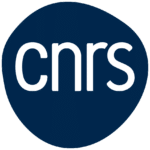The Laboratory of Osteoarticular Biology, Bioengineering and Bioimaging (B3OA) UMR CNRS 7052 INSERM U1271 is affiliated with the CNRS Ingénierie , with the INSERM , with the University Paris Cité and with the Ecole Nationale Vétérinaire de Maisons-Alfort .
Since its creation in 1977, the B3OA has developed a renowned expertise for repair and imaging of osteoarticular tissues. Based on its experience, the mission of the B3OA lab is to provide world-class research and education on osteo-articular bioengineering and imaging.
Our latest news
Impact of the type 2 diabetic microenvironment on bone marrow mesenchymal stem cells: potential of antioxidants for the regulation of intracellular oxidative stress and bone repair
Defended by Rebecca LANDON on December 19, 2023
CNRS Ingénierie places our nutritive hydrogel in the spotlight!
Our publication on the development of a nutritive hydrogel is highlighted by the CNRS Ingénierie.
Enzyme-controlled, nutritive hydrogel for mesenchymal stromal cell survival and paracrine functions
We hereby propose a paradigm shift for enhancing MSC survival by designing, developing, and testing…
Glucose depletion decreases cell viability without triggering degenerative changes in a physiological nucleus pulposus explant model
The present study provided evidence for glucose depletion as an essential player in NP cell…



